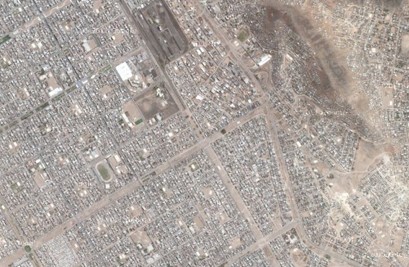
By Kannika Phadoungxath
Cono Sur slum is located in southern Lima, Peru and is one of six regions in the Lima Metropolitan Area, with a total area of 878 square kilometers (Limaeasy, 2012). The region is home to approximately 1.5 million inhabitants (Davis, 2006), with an estimated density of 1,710 people per square kilometer (Limaeasy, 2012). Cono Sur is subdivided into eleven districts, each with varying socioeconomic levels (INEI, 1996). Most inhabitants belong to the lower and middle classes. The economic composition of the area includes manufacturing production and services, with many households that sell goods in informal markets (Riofrio, 2003).
In recent decades, the problem of slum areas has ceased to be a public policy issue for the city of Lima. Of particular concern is the illegal and uncontrolled settlements of unsuitable regions that the authorities have little interest to condition. In Cono Sur, the poor live in shantytowns called pueblos j??venes, settlements in which people first build shelters then install needed services. These areas are predominantly situated on hills and are composed of poorly constructed shacks, known as tugurios, and lack running water and other basic services (Riofrio, 2003).
Lack of access to water and sanitation is a primary challenge for the inhabitants of low-income areas, where water delivery or services can cost six to ten times higher than the more affluent parts of Lima. In the more well-off district of the slum, Villa El Salvador, a plot of land equivalent to 140 square meters with water, drainage, and other basic services would cost on average $8,000 (Riofrio, 2003). Obtaining this basic standard of living in housing is impossible for a majority of the population due to the lack of finances, in addition to the lack of municipal savings and lending systems for housing in Lima. Furthermore, benefitting from a continuous drinking water supply is a luxury only to those in areas closest to the city center, where the more affluent live (Business News Americas, 2000). In the peripheral and marginalized regions, water is trucked in several times a week (Las Americas, 2012).
Policy recommendations
To properly address the issues of slum areas in Cono Sur, effective policy revisions should be considered. Compounding to the problems of scarce water resources and settlements of unsuitable zones is the lack of coordination between Lima’s government bodies. Thus, it is imperative that authorities from different regions work to implement consolidated master plans or provisions for access to water and drainage to these areas prior to settlement. Further, a regional water systems approach should be undertaken by each district to strengthen coordination with respect to managing areas that are in most need.
Finally, seeking adequate financing for water infrastructure is critical for new networks as well as for ongoing operation and maintenance of old networks. Strategies to include private investment will ease the burden on the public sector due to its lack of necessary funds for new infrastructure. Plans seeking public-private partnerships will generate greater expertise and capacity to provide the most basic of needs to the region, which the past and present municipalities have been unable to accomplish.
References
Business News Americas. (2000). Sedapal Upgrades Water Supply in Lima’s Cono Sur. Retrieved on February 3, 2012, from http://www.bnamericas.com/news/infrastructure/Sedapal_Upgrades_Water_Supply_in_Lima’s_Cono_Sur
Davis, M. (2006). Planet of Slums. New York, NY: Verso.
Google. (2012). Google Earth (Version 6.0.3.2197) [Software]. Available from http://www.earth.google.com
Instituto Nacional de Estad??stica e Inform?°tica (INEI). (1996). Lima Metropolitana: Caracteristicas Economicas de la Peuna y Micro Empresa Por Conos y Distritos, 1993 ‘ 1996. Retrieved on February 3, 2012, from http://www.inei.gob.pe/biblioineipub/bancopub/est/lib0163/indice.htm
Las Americas. (2012). Bruce Peru Lima: Children’s Centre at Las Americas. Retrieved on February 6, 2012, from http://volunteerlima.org/la/
Limaeasy. (2012). Important Facts and Figures About Lima. Retrieved on February 6, 2012, from http://www.limaeasy.com/lima_info/facts_figures_lima.php
Riofrio, G. (2003). The Case of Lima, Peru. Retrieved on February 3, 2012, from http://www.ucl.ac.uk/dpu-projects/Global_Report/pdfs/Lima.pdf